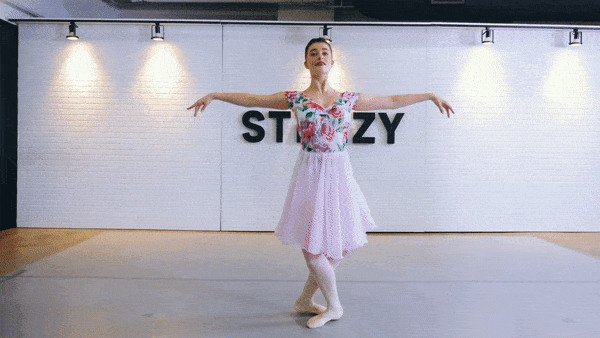For years, the question has echoed within dance communities and beyond: “Why isn’t dance an Olympic sport?” It’s a query that resonates with anyone who’s witnessed the artistry and athleticism of dance, especially when observing sports like gymnastics, where dance-like movements are clearly integral. The breathtaking floor routines of athletes like Simone Biles during the Tokyo 2020 Olympics only amplified this question, highlighting the seemingly blurred lines between athletic dance and Olympic disciplines.
So, what exactly has prevented dance from taking its place on the Olympic stage all these years? The answer is complex, rooted in the challenges of objectively scoring dance, but the landscape is shifting, and the future for Olympic dance is becoming increasingly bright.
The Subjectivity of Scoring: A Hurdle for Olympic Dance
The announcement that Breakdancing, known as “Breaking” within the dance community, would debut at the 2024 Paris Olympics sparked excitement and curiosity. Finally, a form of dance was breaking through into the Games. However, this news was quickly followed by questions about judging: how could the inherently subjective art of dance be fairly scored in an Olympic context?
Breaking, while undeniably athletic and demanding, is not solely about technical precision. It’s deeply intertwined with personal style, improvisational flair, crowd engagement, and the rich culture of battles. Many argue that quantifying these elements with objective scores is impossible, akin to trying to remove subjectivity from judging in reality TV dance competitions – a point often debated heatedly on social media.
Gymnastics and Dance: A Matter of Intent and Scoring
The counter-argument often arises: “But gymnastics incorporates dance, so how is that scored?” As someone with a background in gymnastics, it’s clear that dance is foundational to women’s gymnastics, particularly in floor and beam routines. Gymnasts begin their training with ballet positions and movements, developing body control and grace essential for complex tumbling and apparatus work.
 Ballerina doing a pirouette
Ballerina doing a pirouette
This foundational dance training is not just about aesthetics.
Dance as Foundational Training for Gymnastics
Firstly, gymnasts require exceptional body control to safely and effectively perform acrobatic tumbling passes. Proper spinal alignment and muscle control, honed through ballet and dance techniques, are crucial to prevent injuries.
Secondly, tumbling itself is physically and mentally demanding. The dance sections within a floor routine serve as more than just transitions; they offer gymnasts crucial moments for breath and mental recovery before and after high-intensity tumbling. These dance segments allow for strategic pauses, preventing a purely acrobatic, non-stop routine that would sacrifice crucial mental preparation time.
However, while gymnastics routines feature “dance moves,” their execution and judging differ significantly from dance as an art form. Even when gymnasts incorporate dance elements, the focus in competition is not on artistic expression or emotional conveyance.
Consider the dynamic movements of Simone Biles or Suni Lee in their floor routines during the Tokyo 2020 Olympics. Their “dance moves” are executed with precision and musicality but are primarily judged for technical correctness – precise arm placements, pointed toes, and synchronization with the music according to a strict code of points.
In contrast, pure dance choreography aims to evoke feeling and communicate artistic vision. While gymnasts can excel in dance settings, as demonstrated by Simone Biles’ appearance on Dancing with the Stars, within gymnastics competitions, the dance elements are judged for their contribution to the overall technical performance rather than their artistic merit in the dance sense. The “vibe” or emotional impact of Simone’s arm movements is secondary to whether they meet the “correct” technical specifications on the judges’ scoresheet.
Breakdancing in the Olympics: A New Scoring Paradigm
Despite the vibrant world of competitive dance with numerous national and international events across diverse styles, a unified, standardized scoring system has been lacking. Dance competitions often developed their unique judging criteria, tailored to specific events and organizations, like Hip Hop International.
However, Breakdancing’s inclusion in the Olympics has become a catalyst for change. It necessitates the development of a standardized, repeatable judging methodology that acknowledges both the technical skill and artistic expression inherent in dance. The scoring system being pioneered for Olympic Breaking offers a glimpse into how dance can be evaluated fairly on a global stage.
 Ballerina doing a pirouette
Ballerina doing a pirouette
The judging methodology, as showcased in events like the 2018 Youth Olympics, emphasizes a balanced assessment of key dance elements: technique, artistry, and athleticism. This balanced approach aims to minimize subjective bias and maximize the authenticity of Breaking battles. Judges are selected for their expertise in different aspects of Breaking, ensuring a holistic evaluation encompassing movement cleanliness, storytelling, musicality, and style.
While the potential for bias in judging exists in any subjective sport, including Artistic Swimming or Rhythmic Gymnastics, the rigorous framework being developed for Olympic Breaking strives for fairness and transparency.
Ultimately, the Olympics transcend mere athletic competition; they represent a celebration of global culture and human potential. The Games are a platform to showcase not just what humans can do physically, but how human movement can inspire and move us emotionally.
Dance, beginning with Breakdancing in 2024, is poised to take its rightful place on the Olympic stage. Paris 2024 will be a pivotal moment, demonstrating the viability of a scoring system that honors dance as both a sport and an art form. Whether considered Olympians or not, dancers will continue to push boundaries and compete, and the Olympic inclusion of dance opens doors for broader recognition and appreciation of dance in all its forms worldwide.


